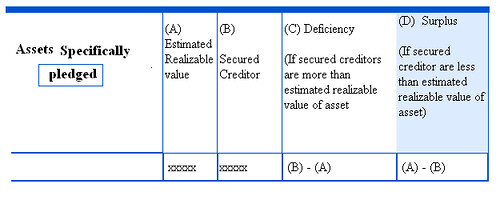Documents required related to Employee
1. Personal Files:
Application Form
Doctors Certificate/Age proof
Fittness Certificate
Form-F for Gratuity Nomination
Form-25 for Nomination for EL With Photo
Induction Form
Increment Details
Training Details:Fire / First aid etc
Promotion/ Demotion Letter
Transfer Letter.
Appointment Letter.
Confirmation Letter.2. Employee's Hand Book
3. Employee Leave Book
4. Identity Card issue Register
5. Employee Interview Register
6. Punching or Bio Matrix Card Register
7. Attendance Record
8. Punching Details
9. OverTime Record & Punching Details
10. Overtime Approval
11. Approval for Man Power
12. Muster Register.
13 .Payment of Bonus (Form-C )
14. Payment of Minimum Wages.
15. Accidents injury Registers & Intimation.
16. Leave Register. (Form-18)
17. Annual Census.
18. Register of Final Settlement.
19. Register for Payment of Gratuity.
20. Register of Penalties & Fines. (Form-21)
21. Register for Advances (Form-22)
22. Adult Register
23. Employment Card (Form-14)
24. Register of Workmen (Form-13)
25. Annual & Half Yearly Returns
26. Register of ESI & PF allottment Number
27. Acknowledement-Wage issue Slip
28. Register for Payment of Incentives, Attandance Bonus etc
29. Esi Registration Certificate for Establishment.
30. EPF Registration Certificate for Establishment.
31. Details of Children enrolled in Creech.
32. Avoid Overlaping of Shifts.
33. Esi & PF Challan Payments
34 Declaration Form & Nomiantion Form
35. Voulantary Declaration from Each Employee for Work on Sunday or holiday
36.Comp off Intimation Letter to Inspector of Factories.
37. Worker Training Record
Checklist / documents related to employee benefits
1. Esi Benefits Such as Maternity Leave/ESI Leave , Treatment & Payment Wages to Workers & Dependents Medical Treatment
2. PF -Pension & Provident Fund to Employees Securing retirement of Employees or their Dependents.
3. Payment of Gratuity Completed Continous 5 years of Service , or Person Permanantely disabled or Expired than they will get Benefits till 58 years.
4. Payment of Leave Encashment to workers for unavialed Leave accumulated to the extent of 30 days.
5. Payment of Bonus to employees 8.33% upto 20% of Basic wages & Minimum of Rs.100/-
6. Payment of Incentives & Attandance bonus for Increasing effeciency of hourly production & Reduce absentisem
7. Employer Contribution to ESI @4.75% & PF 12%
8. Maternity benefit non esi covered employees.
1. Personal Files:
Application Form
Doctors Certificate/Age proof
Fittness Certificate
Form-F for Gratuity Nomination
Form-25 for Nomination for EL With Photo
Induction Form
Increment Details
Training Details:Fire / First aid etc
Promotion/ Demotion Letter
Transfer Letter.
Appointment Letter.
Confirmation Letter.2. Employee's Hand Book
3. Employee Leave Book
4. Identity Card issue Register
5. Employee Interview Register
6. Punching or Bio Matrix Card Register
7. Attendance Record
8. Punching Details
9. OverTime Record & Punching Details
10. Overtime Approval
11. Approval for Man Power
12. Muster Register.
13 .Payment of Bonus (Form-C )
14. Payment of Minimum Wages.
15. Accidents injury Registers & Intimation.
16. Leave Register. (Form-18)
17. Annual Census.
18. Register of Final Settlement.
19. Register for Payment of Gratuity.
20. Register of Penalties & Fines. (Form-21)
21. Register for Advances (Form-22)
22. Adult Register
23. Employment Card (Form-14)
24. Register of Workmen (Form-13)
25. Annual & Half Yearly Returns
26. Register of ESI & PF allottment Number
27. Acknowledement-Wage issue Slip
28. Register for Payment of Incentives, Attandance Bonus etc
29. Esi Registration Certificate for Establishment.
30. EPF Registration Certificate for Establishment.
31. Details of Children enrolled in Creech.
32. Avoid Overlaping of Shifts.
33. Esi & PF Challan Payments
34 Declaration Form & Nomiantion Form
35. Voulantary Declaration from Each Employee for Work on Sunday or holiday
36.Comp off Intimation Letter to Inspector of Factories.
37. Worker Training Record
Checklist / documents related to employee benefits
1. Esi Benefits Such as Maternity Leave/ESI Leave , Treatment & Payment Wages to Workers & Dependents Medical Treatment
2. PF -Pension & Provident Fund to Employees Securing retirement of Employees or their Dependents.
3. Payment of Gratuity Completed Continous 5 years of Service , or Person Permanantely disabled or Expired than they will get Benefits till 58 years.
4. Payment of Leave Encashment to workers for unavialed Leave accumulated to the extent of 30 days.
5. Payment of Bonus to employees 8.33% upto 20% of Basic wages & Minimum of Rs.100/-
6. Payment of Incentives & Attandance bonus for Increasing effeciency of hourly production & Reduce absentisem
7. Employer Contribution to ESI @4.75% & PF 12%
8. Maternity benefit non esi covered employees.
